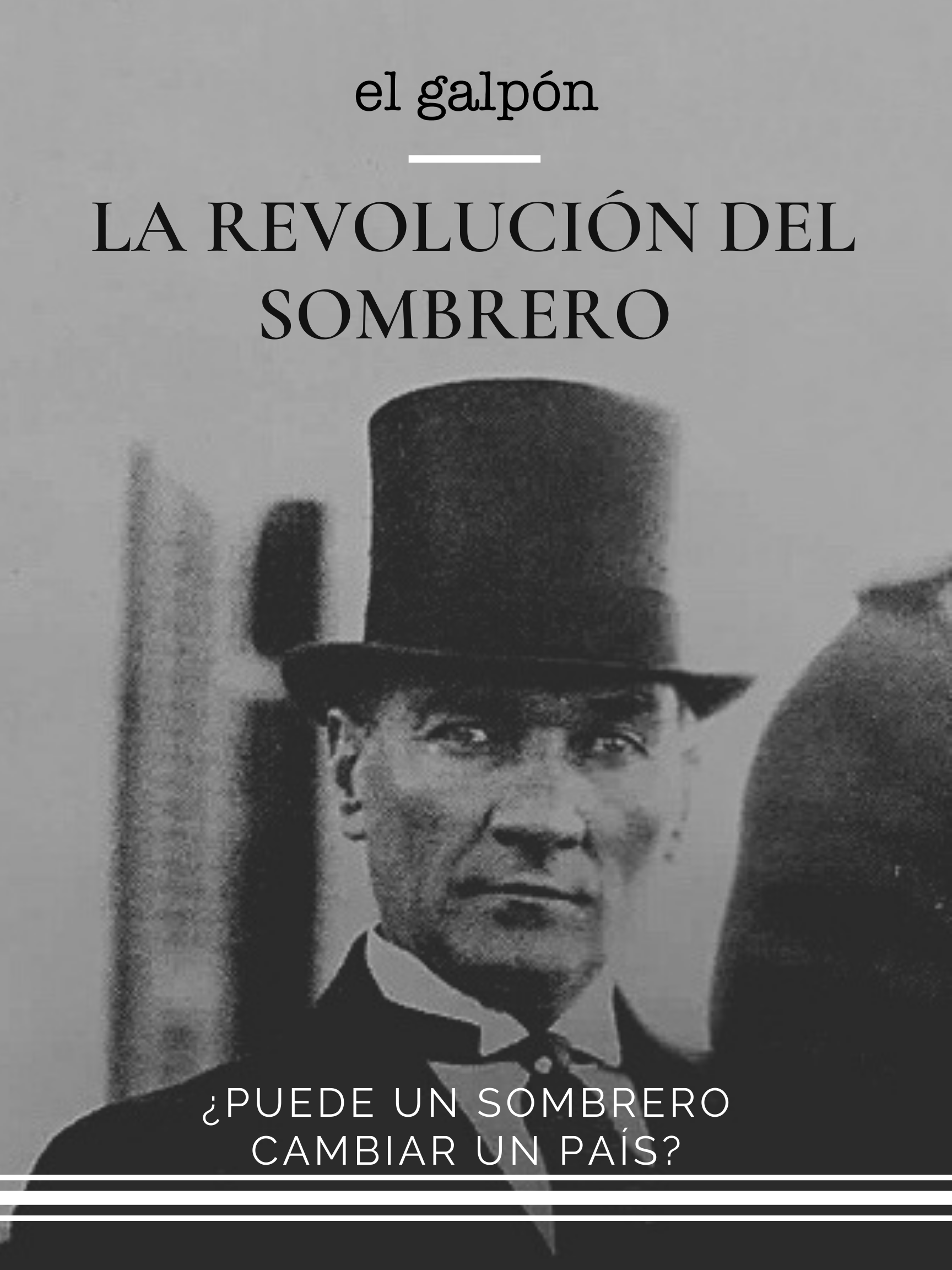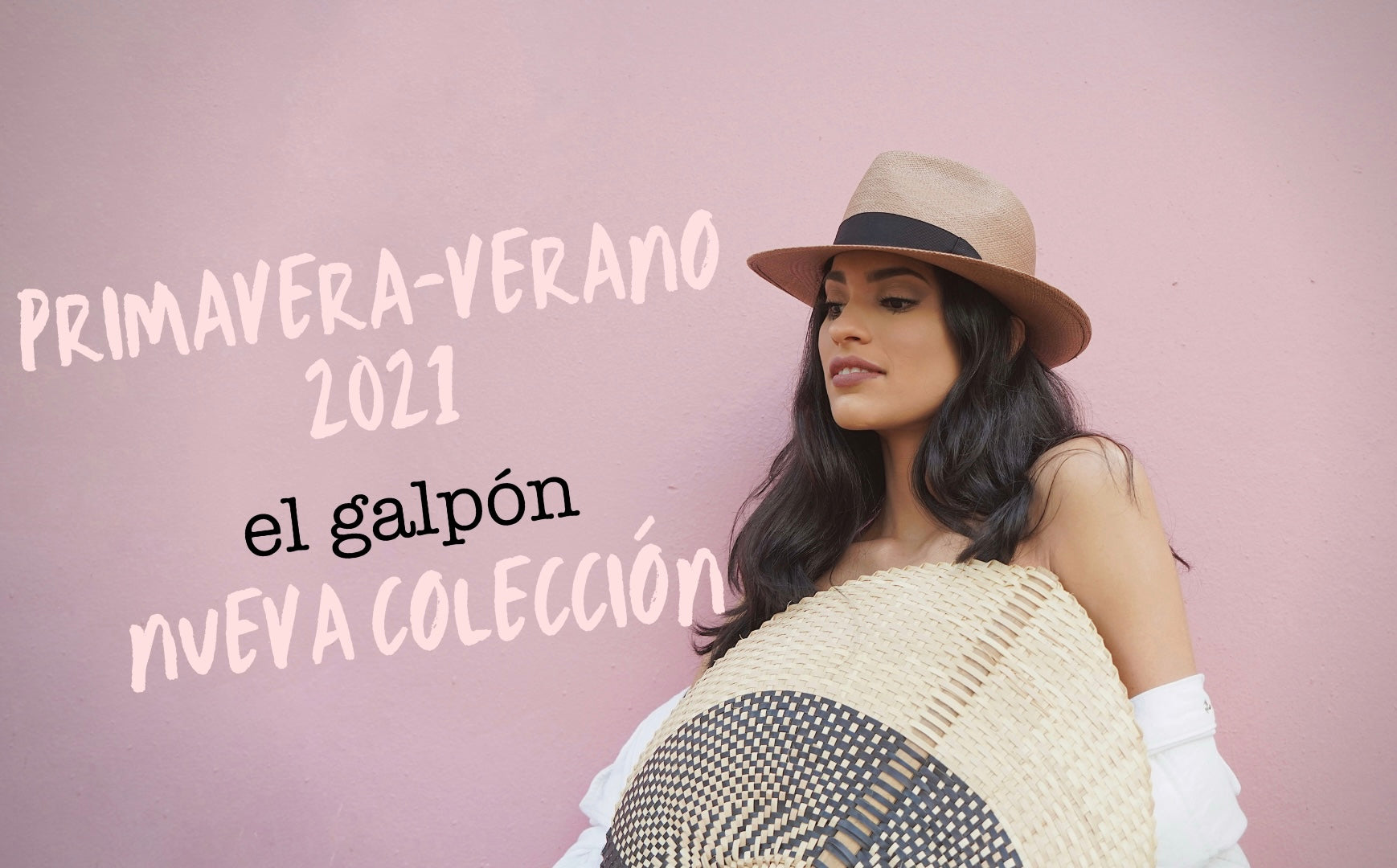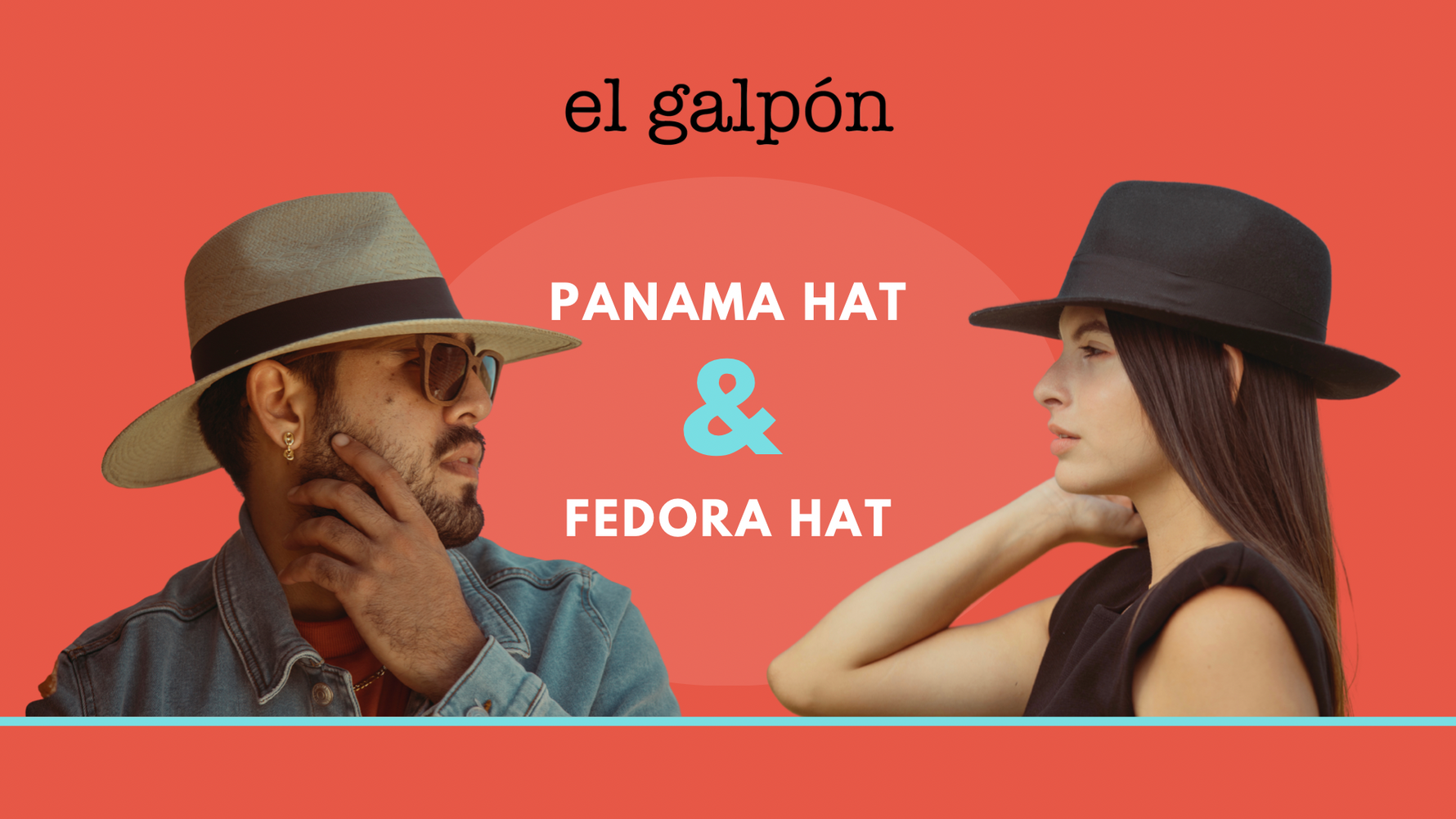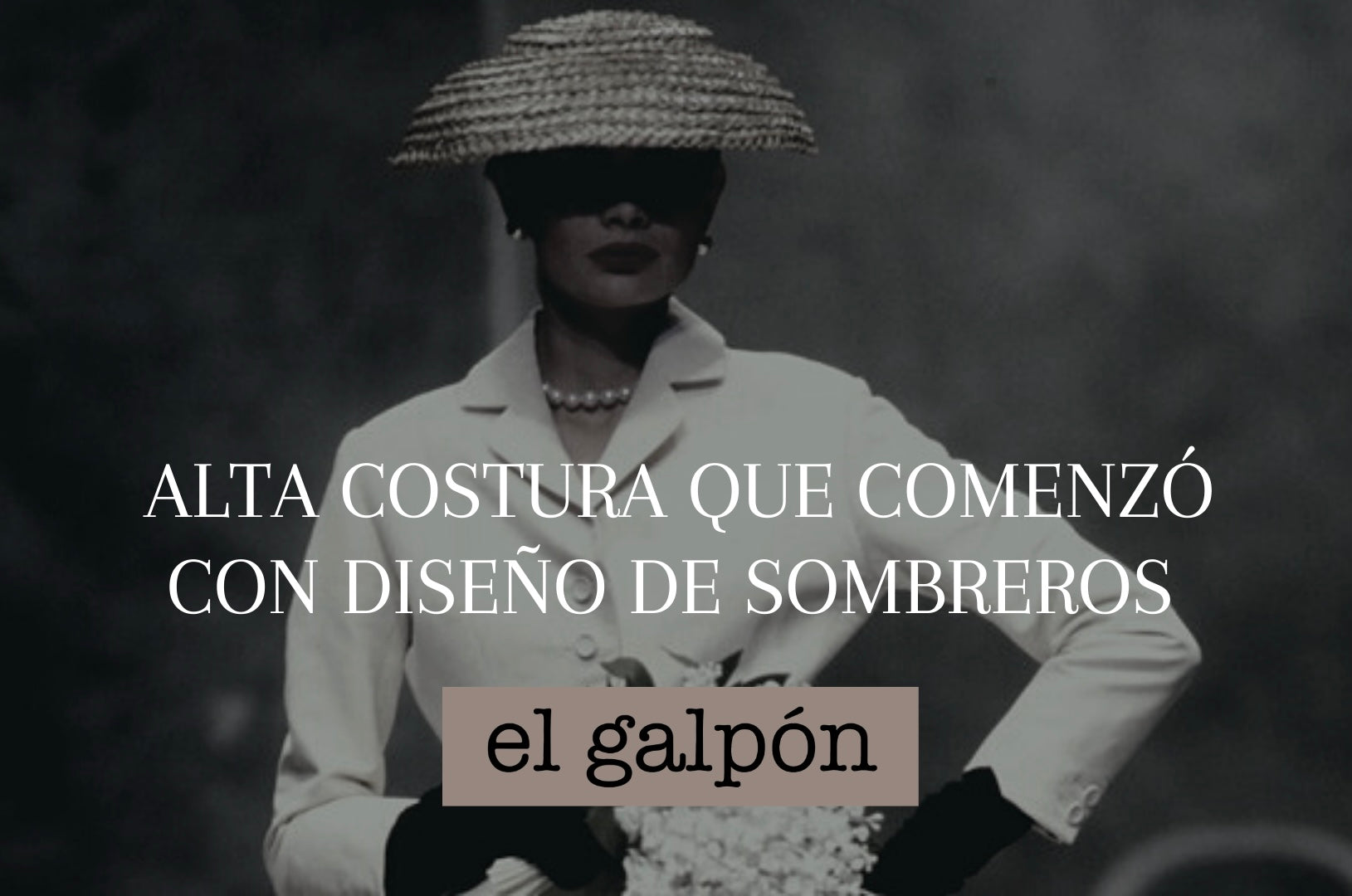El Galpon

El Galpon
Sombrero como Acto de Revolución
¿Imaginas que por usar un sombrero pudieras haber tenido pena de muerte?
Pues esto fue realidad…. A través de la historia los sombreros han sido mas que un accesorio de moda también fueron símbolo de luchas políticas.
El 25 de noviembre de 1925 tuvo lugar en Turquía la llamada Revolución Mundial del sombrero. ¿¿Que significo??
El parlamento aprobó una ley que hizo obligatorio que todos los hombres llevaran sombreros de estilo occidental en los lugares públicos, no se permitiría ningún otro tipo de sombrero. A los que fueran sin sombrero se les dejaría en paz, pero si se quería usar sombrero tenía que ser del modelo propuesto o atenerse a las consecuencias, que podían ser tan severas como la pena de muerte.
Los sombreros eran parte importante de la cultura y el sombreo estilo fez se había convertido en un símbolo nacional. El Sombrero estilo fez fue ideado por los musulmanes andaluces de la ciudad de Fez (Marruecos) en el siglo XVII, como moda para la alta sociedad. Era un tocado masculino de color carmesí.
En 1829 del sultán otomano Mahmud II decreto que todos los funcionarios civiles y el personal militar debían llevar sombreros estilo fez.
Años despues el líder Mustafa Kemal Atatürk entre cosas para modernizar el país estableció que el uso de sombreros de estilo occidental era mucho mejor para el país entre ellos el sombreo Galera o “top hat” o el sombrero Panamá.
El líder Kemal aseguraba que la forma de vestir no era la adeucada y las ropas no eran civilizadas y universales. Como parte de sus reformas modernizadoras busco prohibir llevar el sombreo tradicional turco, el sombreo Fez.
Las personas ya estaban acostumbradas a el estilo fez y no estaban preparadas para el cambio. Por ende se levantaron en revolución. El sombrero estilo fez de ser un sombrero cultural y nacional paso a ser un sombrero revolucionario y de guerra y de resistencia a la occidentalización de la nación Turca.
Kemal se iterpuso para cambiar la manera de vestir y la moda que el pensaba que era correcta. ¿Te imaginas pasar por eso hoy dia? Este propuso que se llevaran zapatos Oxford o botines, pantalones, chalecos, camisas, corbatas, cuellos desmontables, chaquetas y, con suma naturalidad, sombreros estilo panama. Mustafá Kemal era un hombre muy ambicioso y no se conformaba con "fundar" un nuevo país, también quería moldearlo a su imagen y semejanza.
No todo el mundo compartía el entusiasmo de Kemal por usar sombreros de copa, zapatos Oxford y cuellos desmontables. En efecto, el sombrero se convirtió rápidamente en un símbolo del enfrentamiento entre sus partidarios reformistas y sus oponentes conservadores.
Más de treinta personas, tanto hombres como mujeres, fueron ejecutadas en el curso de la breve Revolución del Sombrero de Turquía.
96 años después la Ley del Sombrero de 1925 sigue vigente. Hoy dia “no llevar un sombrero adecuado” es un delito, que se castiga con penas de prisión de dos a seis meses. Recientemente, en la prensa se hablado sobre la polémica suscitada por los planes del actual gobierno para derogar la Ley del Sombrero.
¿Puede una revolución empezar gracias a un sombrero? Por supuesto.... Turquía lo vivió. Definitivamente un sombrero puede cambiar para siempre un país.
¿Que les parece?

El Galpon
Los sombreros para Primavera – Verano 2021 El Galpón Nueva Colección
Como siempre le hemos comentado, los sombreros son el complemento perfecto para cualquier outfit. Son la pieza ideal para hacerte lucir espectacular, pero al mismo tiempo son funcionales, ya que protegen tu piel de los rayos del sol. Durante la primavera y el verano el sombrero panama es el mejor compañero por su frescura, ligereza y versatilidad.
Hoy te mostramos los nuevos modelos de esta temporada que tienes que tomar en cuenta, y claro esta, todos ya estan disponibles en El Galpón.
Ala Plana
Los sombreros de Ala plana son el MUST. Están sumamente de moda por su look trendy y juvenil. Lo puedes lucir con el cabello suelto o con unas beach waves, pero también con un pixie cut quedan súper. Este estilo es muy Buena opción para protegernos del sol por la medida de su ala.
Toque de Color
Otra de las tendencias de la primavera – Verano 2021 son los colores. Los colores llamativos en sombreros son inusuales, pero atraen todas las miradas. Para los mas atrevidos tenemos disponible un panamá hat de estilo tradicional en un llamativo azul turquesa en combinación con una cinta de líneas.
Tradicional no tan clásico
Los sombreros de ala mas pequeñas son para looks un poco más casuales y sencillos. Esta temporada elevamos lo tradicional con nuevos colores sin dejar a un lado lo combinable y versátil del Panama Hat Tradicional. En esta ocasión optamos por tradicionales diferentes. Tenemos disponible color gris con cinta navy, color café con cinta negra y color oliva con cinta negra.
Que te parecieron estas tendencias para Primavera- Verano 2021? Anímate y visítanos en el Galpón. Dale click al link a continuación para que le des un vistazo a toda la nueva colección de El Galpón Primavera – Verano 2021.
https://elgalpon.net/collections/verano-summer
Y recuerda que también puedes visitarnos online hacer tus compras con envío a cualquier parte del mundo o si prefieres tenemos disponible el servicio de pickup, tu escoges la manera más fácil de comprar tu compañero perfecto en esta primavera...
---
Hats for Spring - Summer 2021 El Galpón New Collection
As we have always told you, hats are the perfect complement to any outfit. They are the ideal piece to make you look spectacular, but at the same time they are functional, since they protect your skin from the sun's rays. During spring and summer the panama hat is the best companion for its freshness, lightness and versatility.
Today we show you the new models of this season that you have to take into account, and of course, they are all already available in El Galpón.
Flat wing
Flat Brim hats are the MUST. They are extremely fashionable for their trendy and youthful look. You can wear it with loose hair or with beach waves, but also with a pixie cut they look super. This style is a very good option to protect ourselves from the sun due to the size of its wing.
Touch of Color
Another trend of spring - Summer 2021 are colors. Bold colors in hats are unusual, but they turn heads. For the more daring we have available a traditional style panama hat in a striking turquoise blue in combination with a striped ribbon.
Traditional not so classic
The smaller brimmed hats are for looks a little more casual and simple. This season we elevate the traditional with new colors without leaving aside the combinable and versatile of the Traditional Panama Hat. This time we opted for different traditional ones. We have gray color with navy tape available, coffee color with black tape and olive color with black ribbon.
What do you think of these trends for Spring-Summer 2021? Go ahead and visit us in the shed. Click on the link below to take a look at the entire new collection of El Galpón Spring - Summer 2021.
https://elgalpon.net/collections/verano-summer
And remember that you can also visit us online to make your purchases with shipping to any part of the world or if you prefer we have the pickup service available, you choose the easiest way to buy your perfect companion this spring...

El Galpon
Sombrero Panamá y Sombrero Fedora… ¿Cuál es la diferencia?
Los sombreros se han usado a lo largo de la historia de la humanidad como protección del sol, nieve o Lluvia. También se han convertido en un elemento importantísimo a la hora de vestir y combinar nuestros outfits porque es una forma de expresar nuestra propia identidad y personalidad.
Cuando alguien menciona la palabra sombrero, no puede evitar imaginarse el sombrero Panamá y el estilo Fedora, que ofrecen un estilo y una sofisticación inconfundibles a cualquiera que lo use.
Pero, ¿qué eventos llevaron a la existencia de estos iconos de la moda? De hecho, ¿qué es el sombrero de Panamá y qué es un Fedora?
Aquí te enseñamos las diferencias y detalles entre estos dos estilos.
Sombrero Panamá
Para ser un sombrero original Panamá tiene que estar hecho de una palma específica llamada Toquilla también conocida por los waivers como “jipijapa”Su origen se remonta a Ecuador, donde por primera vez fueron tejidos a mano por los incas. Actualmente hay dos tipos de escuelas de tejido, dos formas diferentes de tejer la Palma la escuela "Cuenca" y la escuela "Montecristi”.
Cuando los conquistadores llegaron a Ecuador en 1526, se vio que muchos de los habitantes locales usaban este sombrero de paja toquilla. A pesar de utilizar métodos más modernos, las opciones de sombreros que vemos hoy son muy similares a las que fabricaban y usaban los ecuatorianos hace casi 500 años.
Sombrero Fedora
El Famoso sombrero Fedora es más visto en fieltro o lana. Tienen un origen mas teatral. Aunque muchos consideran que el Fedora es un sombrero tradicional, usado por actores de películas clásicas de Hollywood de los años 40 y 50, a decir verdad esto es mas que un invento.
De hecho, este estilo nació a finales del siglo XIX en Francia y recibió su nombre por una obra de teatro de Victorien Sardou. La obra Francesa que se presentó por primera vez en los Estados Unidos traia a escena una heroína, llamada la princesa Fedora, con un sombrero durante la actuación. Esto llevo a inmortalizar el nombre FEDORA para siempre.
El sombrero Fedora es tan icónico que unos 130 años después sigue siendo tan popular como siempre. Podemos ver los Fedoras en fieltro con una corona dentada, suelen ser de color gris, marrón oscuro, tostado o negro. Pero también pueden estar hechos de paja, algodón, lino, y cuero. El gran atractivo de Fedora también ha llevado a muchas celebridades a adoptarlo en su estilo en el siglo XXI. Definitivamente es un sombrero atemporal y es probable que siga siendo omnipresente en otros 100 años.
En fin, el Fedora es un estilo de sombrero que se puede hacer con una variedad de materiales diferentes mientras que el Panamá tiene que ser tejido a mano y específicamente hecho de la palma toquilla. Podríamos decir que un Fedora es un modelo, una forma de sombrero mientras que un sombrero panama es un estilo de sombrero.
---
Panama Hat and Fedora Hat ... What is the difference?
Hats have been used throughout human history as protection from the sun, snow or rain. They have also become a very important element when it comes to dressing and combining our outfits because it is a way of expressing our own identity and personality.
When someone mentions the word hat, they can't help but imagine the Panama hat and Fedora style, offering unmistakable style and sophistication to anyone who wears them.
But what events led to the existence of these fashion icons? In fact, what is the Panama hat and what is a Fedora?
Here we show you the differences and details between these two styles.
Panama hat
To be an original Panama hat it has to be made from a specific palm called Toquilla, also known to waivers as “jipijapa”.Their origin dates back to Ecuador, where they were hand-woven by the Incas for the first time. They are two types of weaving schools, the "Cuenca" and "Montecristi" schools.
When the conquerors arrived in Ecuador in 1526, many of the local inhabitants were seen to wear this toquilla straw hat. Despite using more modern methods, the hat options we see today are very similar to those made and used by Ecuadorians almost 500 years ago.
Fedora hat
The famous Fedora hat is most seen in felt or wool. They have a more theatrical origin. Although many consider the Fedora to be a traditional hat, worn by actors from classic Hollywood movies of the 1940s and 1950s, in fact this is more than an invention.
In fact, this style was born at the end of the 19th century in France and was named after a play by Victorien Sardou. The French play that was first performed in the United States featured a heroine, named Princess Fedora, wearing a hat during the performance. This led to immortalize the name FEDORA forever.
The Fedora hat is so iconic that some 130 years later it is still as popular as ever. We can see the felt Fedoras with a toothed crown, they are usually gray, dark brown, tan or black. But they can also be made of straw, cotton, linen, and leather. Fedora's sheer appeal has also led many celebrities to embrace it in their style in the 21st century. It is definitely an iconic timeless hat and is likely to remain ubiquitous for another 100 years.
Finally, the Fedora is a style of hat that can be made with a variety of different materials while the Panama has to be handwoven and specifically made from the toquilla palm. You can say Fedora is a model or shape of hat and a Panama Hat is style of hat

El Galpon
Los diseñadores de alta costura que comenzaron como diseñadores de sombreros
La sombrerería es una forma de arte. Estimula la imaginación y ha servido de desarrollo para algunos de los nombres más importantes de la moda. Antes de que Gabriel Chanel diseñara su monograma CC entrelazado, estaba haciendo sombreros. Mucho antes de que Christian Dior diera un giro a la moda con el "new look", era sombrerero. Halston, el diseñador más icónico de los años 70 que definió la era, fue el cerebro detrás del sombrero pillbox. A continuación, algunos de los diseñadores mas icónicos y reconocidos en la industria que sus comienzos diseñando sombreros moldearon su marca a como la conocemos hoy.
Coco Chanel
Gabriel Chanel redefinió la idea de la ropa de mujer. Su trabajo forma la base de lo que ahora consideramos "casual chic". Ella tiró el libro de reglas sobre siluetas encorsetadas y adaptó un estilo más deportivo para la ropa de mujer. Todavía sentimos su influencia en la moda hoy en día, y ella era la única diseñadora de moda que figuraba en la lista de las 100 personas más influyentes del siglo XX de la revista Time.
Chanel pasó seis años aprendiendo a coser antes de convertirse en costurera. Mientras estaba en una relación con el heredero textil, Etienne Balsan, creó sombreros como pasatiempo. Al principio, vendía sus sombreros en la planta baja del apartamento de Balsan. Sus diseños originales se centraron en estilos navegantes y sencillos sombreros de paja con adornos.
En 1910, se convirtió en sombrerera con licencia y abrió su primera boutique en 21 Rue Cambon, cerca del Ritz de París, llamada "Chanel Modes". Posteriormente, Chanel sería propietaria de varios edificios en Rue Cambon, que se convertirían en la tienda insignia de la marca. Sus sombreros llamaron la atención después de que la actriz Gabrielle Dorziat los usara durante la obra Bel Ami en 1912. Dorziat luego modelaría los sombreros para la revista Les Modes en mayo de 1912.
En 1913, Chanel abriría una tienda en Dauville y comenzaría a cambiar al prêt-à-porter, lanzando su primera colección de alta costura en 1916. Incluso cuando se aventuró en el mundo del prêt-à-porter y los accesorios de cuero, Chanel continúo ofreciéndonos una gama de sombrerería dentro de la etiqueta.
Halston
Antes de que Halston lanzara su marca homónima, creó sombreros para la peluquería en el Hotel Ambassador de Chicago y abrió su propia tienda en la llamada "Magnificent Mile" de Chicago a finales de los años 50. El éxito de su trabajo lo llevó a ser descubierto por Lilly Dache, quien llevó a Halston a Manhattan.
Después de un año de trabajar para Dache, se convirtió en el jefe de sombreros en los grandes almacenes de lujo Bergdorf Goodman en Nueva York. Halston fue el primer sombrerero interno al que se le permitió diseñar bajo su propio nombre. En poco tiempo, el trabajo de sombrerería minimalista de Halston llamó la atención. Diana Vreeland, editora de las revistas de moda Harper's Bazaar y Vogue, dijo que él era "probablemente el mayor fabricante de sombreros del mundo".
Su trabajo salió a la luz pública cuando la Primera Dama Jacqueline Kennedy salió con un sombrero pillbox a la toma de posesión de su esposo en 1961. El sombrero pillbox se convirtió rápidamente en una parte distintiva del look de Jacqueline Kennedy como Primera Dama, y Halston diseñó una gama de gorros característicos. El estilo pillbox fue revolucionario, ya que le permitió al usuario mantener su cabello con un estilo voluminoso sin perder el efecto debajo de un sombrero de gran tamaño. Halston tiene su lugar en los libros de historia como el hombre que ayudó a refinar el estilo característico de Jacqueline Kennedy.
Christian Dior
Asociamos a Christian Dior con la creación del "new look" y por ser sinónimo de elegancia europea. Su libro "Little Dictionary of Fashion", incluye la cita "sin sombreros, no hay civilización".
Mucho antes de dominar la escena de la moda en París, era sombrerero. Su amor por los sombreros llegó a una edad temprana después de ver a su madre, “siempre con sombrero”. A finales de la década de 1930, diseñó piezas espectaculares para el sombrerero Calude Saint-Cry, llevando la idea de los sombreros como accesorio al siguiente nivel. El sombrerero interno de la marca, Stephen Jones, hizo uno de los diseños de sombreros originales de Christian Dior en 2019, utilizando el boceto original de Christian.
Christian Dior, veía un sombrero como parte del atuendo y no como una pieza separada, el sombrero era parte de la creación de un outfit. Después de lanzar su casa de moda homónima, se mantuvo fiel a su enfoque en el sombrero como pieza central, incluyéndolos en cada colección. Desde la muerte de Christian Dior, cada Director Creativo ha tomado el sombrero y lo ha reinventado para su época. Dior sigue teniendo un taller de sombrerería, manteniéndose fiel a la fascinación de su fundador por el accesorio.
Jeanne Lanvin
Debe haber algo en el agua en París porque otra diseñadora francesa clásica, Jeanne Lanvin, la fundadora de la casa de moda 'Lanvin', comenzó a trabajar para una sombrerera a los 13 años. Comenzó repartiendo sombreros en París y tiempo despues se convertiría en aprendiz de sombrerera a los 16 años. Se convirtió en sombrerera capacitada en la década de 1880. Jeanne usó sus ahorros para abrir su taller de sombrerería y tuvo éxito a principios de los años 20, cuando la mayoría de la sociedad parisina de moda usaba sus sombreros.
Luego se casaría con el conde Emilio di Pietro, un noble italiano, y dos años más tarde dio a luz a su hija, Marquerite, que se convertiría en la mayor musa de la diseñadora. Jeanne cambiaría al prêt-à-porter después de empezar a crear ropa para su Marquerite, lanzando su primera gama de ropa infantil en 1908.
Nos sorprendemos con la cantidad de diseñadores emblemáticos y legendarios que comenzaron sus carreras en la sombrerería. Fue la creatividad del proceso de diseñar sombreros lo que les dio su primera probada del éxito. Definitivamente cada una de estas marcas llego a definir la moda contemporánea. Hoy día aun podemos ver como alguno de estos grandes diseñadores siguen dándole un papel importante a los sombreros en la moda actual.
---
The Couture Designers That You Didn’t Know Started as Hat Designers
Millinery is an art form. It sparks the imagination, and it has served as the breeding ground for some of fashion’s biggest names. Before Gabriel Chanel designed her interlocking CC monogram, she was making hats. Long before Christian Dior turned fashion on its head with the ‘new look’, he was a milliner. Halston, the most iconic designer of the 70s who defined the era, was the brains behind the pillbox hat. We’re going to give you a quick overview of some of the industry’s most recognisable names and how their millenary work shaped their brand.
Coco Chanel
Gabriel Chanel redefined the idea of womenswear. Her work forms the foundation of what we now considered to be ‘casual chic’. She threw out the rulebook about corseted silhouettes and adapted a sportier style for womenswear. We still felt her influence on fashion today, and she was the only fashion designer listed in Time Magazine’s 100 most influential people of the 20th century.
Chanel spent six years learning how to sew at Aubazine before becoming a seamstress. While in a relationship with the textile heir, Etienne Balsan, she created hats as a hobby before Balsan suggested she offer them for sale. In the early days, she sold her hats from the ground floor of Balsan’s apartment. Her original designs focused on boater styles and simple straw hats with trims.
In 1910, she became a licensed milliner and opened her first boutique at 21 Rue Cambon, near the Ritz in Paris, called ‘Chanel Modes’. Chanel would later own several buildings on Rue Cambon, which would become the brand’s flagship store. Her hats gained attention after the actress Gabrielle Dorziat wore them during the play Bel Ami in 1912. Dorziat would later model the hats for Les Modes magazine in May 1912.
In 1913, Chanel would open a store in Dauville and begin to switch to ready-to-wear, releasing her first couture collection in 1916. Even when she ventured into the world of ready-to-wear and leather accessories, Chanel would continue to offer a millinery range within the label.
Halston
Before Halston launched his eponymous brand, he created hats for the hair salon at the Chicago Ambassador Hotel and opened his own store in Chicago’s so-called ‘Magnificent Mile’ in the late 50s. The success of his work led him to be discovered by Lilly Dache, who brought Halston to Manhattan.
After a year of working for Dache, he became the head milliner at the luxury department store, Bergdorf Goodman in New York. Halston was the first in-house milliner to be allowed to design under his own name. Within no time, Halston’s minimalistic millinery work was catching attention. Diana Vreeland, the editor of fashion bibles Harper's Bazaar and Vogue, said he was “probably the greatest hatmaker in the world”.
His work entered the public eye when First Lady Jacqueline Kennedy stepped out wearing a pillbox hat to her husband’s 1961 inauguration. The pillbox hat quickly became a signature part of Jacqueline Kennedy’s look as First Lady, with Halston designing her a range of signature pillbox hats. The pillbox style was revolutionary as it allowed the wearer to keep their hair in a voluminous style without losing the effect under an oversized hat.
Some of the most iconic and memorable photos of the Kennedy era features Jackie wearing Halston’s hats, including that faithful day in Dallas. Halston has his place in the history books as the man who helped refine Jacqueline Kennedy’s signature look.
During the early 60s, Halston continued to design hats for the likes of Virna Lisi, Rita Hayworth, and Liz Minnelli. As the popularity of hats began to die down in the mid-sixties, Halston switched to focusing on ready-to-wear, releasing a line for Bergdorf Goodman before creating his label. The rest is history.
Christian Dior
You might associate Christian Dior with creating the ‘new look’ and for being synonymous with European elegance. His 1954 book, ‘Little Dictionary of Fashion’, features the quote “without hats, there is no civilization”.
Long before he was dominating the fashion scene in Paris, he was a milliner. His love for hats came at an early age after seeing his mother, “always behatted”. During the late 1930s, he designed show-stopping pieces for the milliner Calude Saint-Cry, pushing the idea of hats as an accessory to the next level. The brand’s in-house milliner Stephen Jones made one of Christian Dior’s original hat designs in 2019, using Christian’s original sketch.
He approached his work by seeing a hat as part of the outfit and not a separate piece. For Christian Dior, a hat was part of the storytelling involved with creating an outfit. After launching his eponymous fashion house, he remained true to his focus on the hat as a centrepiece, including them in every collection. Since Christian Dior’s passing, each Creative Director has taken the hat and reinvented it for their era. Dior continues to have a millinery workshop, remaining true to their founder’s fascination for the accessory.
Jeanne Lanvin
There’s must be something in the water in Paris because another classic French designer, Jeanne Lanvin, the founder of the ‘Lanvin’ fashion house, began working for a milliner at 13. She started by delivering hats over Paris and was nicknamed the ‘Little Omnibus’. Jeanne would become a milliner’s apprentice at 16. She would become a trained milliner, working in the rue due Faubourg Saint-Honore district of Paris in the 1880s. Jeanne used her savings to open her millinery workshop and became successful in the early 20s, with most of fashionable Parisian society wearing her hats.
She would go on to marry Count Emilio di Pietro, an Italian nobleman, and two years later gave birth to her daughter, Marquerite, who would become the designer’s greatest muse. Jeanne would change to ready-to-wear after she began creating clothing for her Marquerite, launching her first childrenswear range in 1908. She would later open a store in the same area of rue due Faubourg Saint-Honore to launch her fashion label.
When we look at some of the most iconic fashion houses, you’ll be surprised by how many legendary designers started their careers in millinery. It was the creativity of the design process that gave them their first taste of success. The success of their millinery work would drive them on to launch their ready-to-wear brands. Each of these brands would come to define contemporar
